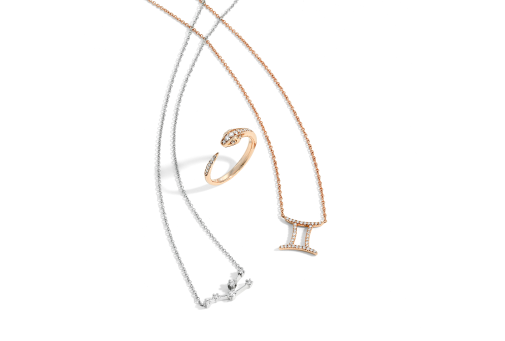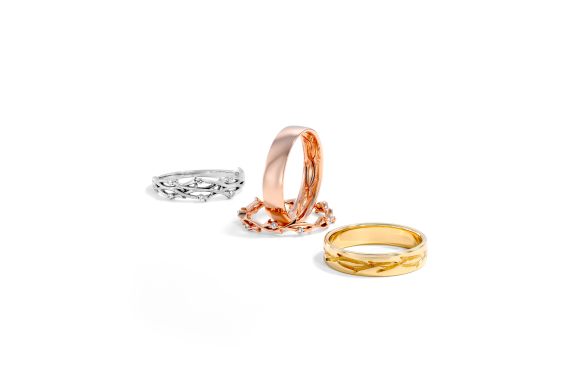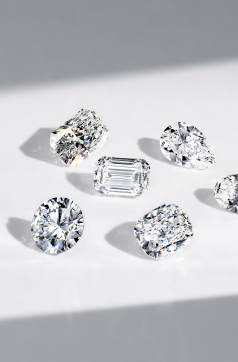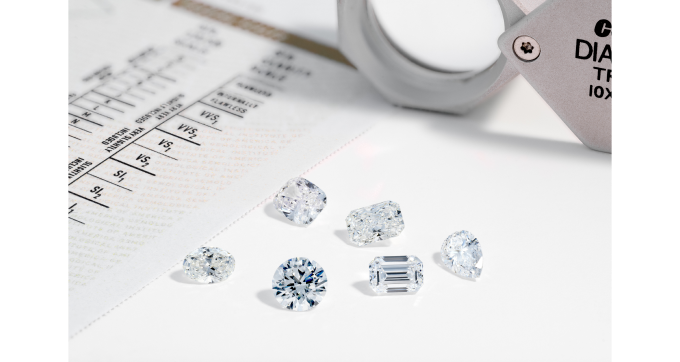Quick Summary
Lab-grown diamonds are real diamonds created using advanced technology, offering the same brilliance and durability as natural stones at a lower price. However, critics often cite resale value, sentiment, and rarity as drawbacks, but these concerns don’t hold up under scrutiny. Most diamonds—natural or lab-grown—don’t increase in value, and emotional meaning comes from personal connection, not origin. Lab-grown diamonds are also frequently mistaken for cubic zirconia, though they’re chemically and structurally identical to mined diamonds. For buyers who care about beauty, ethics, and value, lab-grown diamonds are a thoughtful and modern choice.
Lab-grown diamonds are changing how we shop for engagement rings and fine jewelry. According to the 2025 Real Weddings Study by The Knot, 52% of couples who got engaged in 2024 said their engagement ring featured a lab-grown diamond, and that number continues to grow. As more couples look for meaningful alternatives to mined diamonds, lab-grown options continue to appear, with celebrities like Emma Watson and Bindi Irwin proudly wearing them.
Despite this growing demand, many couples have expressed reservations about choosing lab-grown diamonds for their engagement rings. Don’t they have a poor resale value? Aren’t they simply fake diamonds or, even worse, too ‘common’? In this blog, we’ll review the top concerns about lab-grown diamonds and why many of these ‘downsides’ don’t hold up under review.
What Are Lab-Grown Diamonds?
Lab-grown diamonds are virtually identical to natural diamonds: they share the same chemical, physical, and optical properties. The only difference is where they’re formed. Instead of developing deep underground over billions of years, lab-grown diamonds are created in advanced lab environments using either CVD (Chemical Vapor Deposition) or HPHT (High Pressure High Temperature) methods.
Because they’re grown in controlled settings, lab diamonds are more accessible and cost-effective. You can often save up to 80% on a stone of the same size and quality compared to a mined diamond, making it easier to choose a larger carat, better cut, or custom setting without going over budget.
Lab-grown diamonds also come with the same certifications and grading reports as natural diamonds, including GIA and IGI documentation. Like their natural counterparts, they’re also backed by warranties, giving you the same assurance, sparkle, and value, but at a much friendlier price point.
The Disadvantages of Lab-Grown Diamonds (and Why They Aren’t Real)
Despite their rise in popularity, you’ll come across claims that lab diamonds are less valuable, less meaningful, or somehow inferior to natural stones. Let’s take a closer look at the most common concerns and why they don’t hold up under scrutiny.
Myth #1: Lab Diamonds Lose Their Value Over Time
One of the most common concerns is that lab-grown diamonds won’t hold their value over time. Critics argue that because they’re made in labs and can be reproduced, they don’t have the same resale potential as natural diamonds.
The truth is, most diamonds, lab-grown or natural, don’t appreciate in value unless they’re rare, antique, or tied to a historic moment. Standard diamonds, even natural ones, tend to lose value once sold. Jewelry stores have high markups, and resale markets don’t offer full retail pricing. So if you’re choosing a stone for resale, neither option is ideal.
What makes a diamond truly valuable is how it’s worn, gifted, and cherished. For most buyers, value is found in the meaning and the moment, not the potential for resale years down the line. In delicate side stone engagement rings like The Penelope, lab-grown diamonds offer the same sparkle and meaning without the premium pricing.
Myth #2: Lab Diamonds Are Too ‘Shallow’
There’s an assumption natural diamonds are more emotionally significant than lab-grown stones. They point to traditions, marketing, or the millions of years it takes for a mined diamond to form. This creates the idea that a natural diamond is somehow “more real” or more meaningful.
But meaning isn’t assigned by a mine or a certificate. It’s created through love, memory, and intention. A diamond doesn’t need to be ancient to carry value - it needs to be chosen with care and worn with purpose. For many, the decision to buy a lab-grown diamond for a solitaire engagement ring like The Lexie reflects shared values: sustainability, transparency, and thoughtful spending.
Myth #3: Lab Diamonds Are Too Common
Another perceived downside is that lab-grown diamonds are too common. Natural diamonds are the result of billions of years of pressure and heat deep within the earth. Lab-grown diamonds, by comparison, can be made in a matter of weeks. Doesn’t this take away from their exclusivity?
No, because rarity doesn’t always equal quality. Lab-grown diamonds are graded by the same 4Cs as natural diamonds: cut, color, clarity, and carat weight. To the naked eye, there’s also no visible difference between a lab diamond and a natural one. They offer the same sparkle, brilliance, and elegance, especially on vintage-inspired beauties like The Catherine, so don’t let the exclusivity concern stop you from buying a truly beautiful stone.
Myth #4: Lab Diamonds Are the Same As Zirconia
This is one of the most common misconceptions. Some people assume that because lab-grown diamonds are made above ground, they’re similar to cubic zirconia. But that isn’t true: lab diamonds aren’t lookalikes or simulants. They’re chemically and physically identical to natural diamonds, graded by the same standards and even require the same tools to cut and polish.
Cubic zirconia is an imitation stone. It may sparkle, but it doesn’t have the same hardness, structure, or brilliance as a natural diamond. Lab-grown diamonds, on the other hand, are made of pure carbon, just like those found in the earth. When you wear one on a halo engagement ring like The Kylie, no one sees a shortcut—they see a stunning, brilliant diamond.
Should You Choose a Lab-Grown Diamond?
Lab-grown diamonds are an ethical and environmentally conscious alternative center stone, created without the social and ecological impact of traditional mining. They're also significantly more affordable, allowing you to choose a larger stone, a better cut, or a custom setting without exceeding your budget.
At Keyzar, we believe that every diamond—lab-grown or natural—should be meaningful. If you’re still weighing the pros and cons of lab-grown diamonds, we’d be happy to help you explore your options. From custom settings to expert guidance, we’re here to make sure your ring reflects you. Shop Now!






